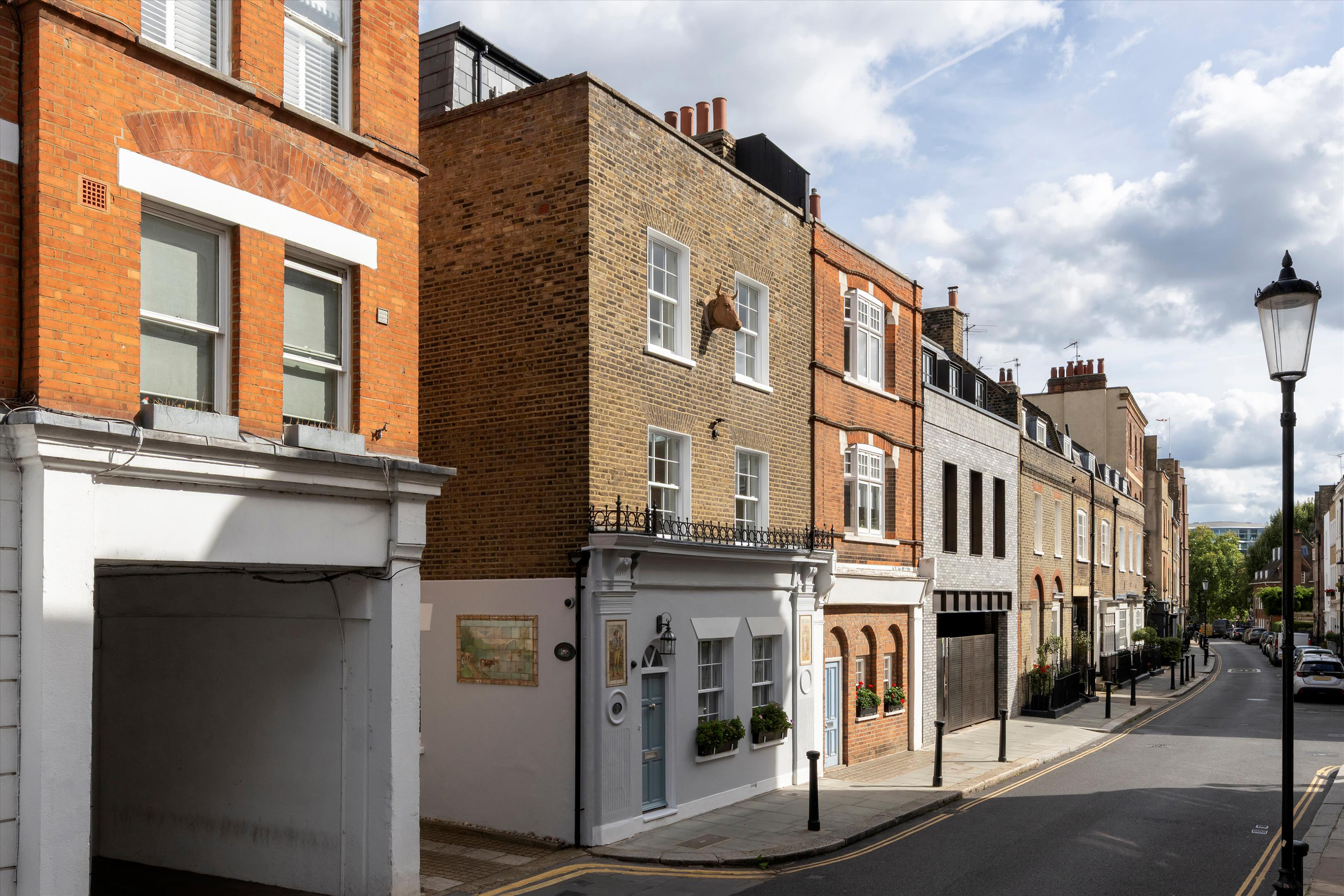The Dell Garden: A Renaissance paradise in Norfolk
George Plumptre explores the legacy of the great nurseryman Alan Bloom, via his remarkable Norfolk garden.


Curiosity about and a passion for plants and introducing new varieties is embedded in the history of British gardening. One of the richest veins it has produced has been the succession of great nurserymen who have also created admired gardens – usually to display their plants in a way that would help their businesses.
In the 18th century, there were George London and Henry Wise in partnership at their Brompton Nursery in London; in the 19th century, there was the Veitch dynasty, who created the Exotic Nursery in London and Exeter Nurseries; and, in the 20th century, there was Alan Bloom at Bressingham in Norfolk.
For any gardener of a certain age, Alan was arguably the most significant British gardener of the post-Second World War period. His impact was summed up by Michael Leapman in the tribute he wrote after Alan’s death, aged 98, in 2005:
‘I first set eyes on him some 13 years ago – a tall man, still muscular though well into his eighties, his thick white hair tumbling below his shoulders as he forked up clumps of aconites for sale at the family garden centre he had founded 40 years earlier at Bressingham in Norfolk. Yet although he looked for all the world like an ageing hippie, he had been one of the most innovative plantsmen of the post-war years, responsible for a profound change in the look of British gardens.’
Alan’s appearance in his later life was recalled with affection by all who knew him. Even the Oxford Dictionary of National Biography (ODNB) refers to him as ‘a kind of horticultural pirate’, but beneath the long hair and earrings was the same passionate, knowledgeable and generous gardener who had started a revolution in 1953 when he embarked on creating his Dell garden with his very first island bed.
Alan was the son of a nurseryman and market gardener and his family traced its lineage back to Huguenots. Having worked for his father, Alan set up his own nursery and, by the Second World War, he had started Bloom’s Nurseries, which moved to the present site in 1946 when he purchased Bressingham Hall. By then, Alan had long been a champion of perennials and alpines, and was becoming influential in both spheres.
Visiting Bressingham today puts me in mind of visiting certain great gardens in Italy in days gone by, where you forced your way through unpromising suburban or semi-industrial surroundings to discover an anonymous rickety gate that, once forced open, revealed the totally unannounced Renaissance paradise for which you were searching.
Exquisite houses, the beauty of Nature, and how to get the most from your life, straight to your inbox.
The commercial nursery that was Blooms of Bressingham is now a Wyevale garden centre with a vast car park; beyond that, you have to find your way past a railway marshalling yard, which is the legacy of another of Alan’s passions: steam locomotives.
However, once you’ve found your way into the garden, a quite unforgettable landscape unfolds in front of you, gently undulating ground decorated with the great island beds Alan created. They’re evocatively described in the previously mentioned ODNB entry, ‘sailing like stately floral galleons through ample lawns. Less labour-intensive than borders, they allowed plants to be viewed from all sides, they allowed access for the gardener, and allowed more light so plants became more sturdy and needed less staking’.
Informal island beds, so popular in the 1950s and 1960s, were sneered at by gardening snobs in the late 20th century, along with heathers and conifers. However, the panorama of plant shapes and associations laid out at Bressingham – tall spires of perennial grasses and kniphofias; achilleas, aconitum and agapanthus; clumps of crocosmias and hostas – exemplifies a fashionable ‘prairie style’ use of perennial plants as used by modern-day luminaries, including Oehme and van Sweden, Piet Oudolf and Tom Stuart-Smith.
Alan made his first island beds in front of the house at Bressingham, then, over the years, spread into the adjoining meadows to eventually cover six acres. He demonstrated that, far from requiring any design masterplan, a garden of this style could just grow organically, in the same way that its shapes and lines are natural and organic. Today, there are 48 beds and to see his style of planting on that scale is an education.
Sheltered by banks of dense woodland, there are memorable long views through curving lines of mown lawn that link a satisfying tapestry of plant shapes. It’s an extra-ordinarily peaceful garden for one that contains such dense planting and, because of the predominance of perennials, it develops steadily from early-summer domes of luscious green foliage through a constant succession of flowerings lasting into late autumn.
Through five decades, Alan used his palette of island beds to study and develop both individual plants and ways of growing them. His friends the German nurserymen Karl Foerster and George Arends introduced him to German varieties of perennials bred to perform without the need for laborious staking to keep them upright. One of the innovations of the island-bed system – as well as displaying plants from different sides – was how it gave plants a more open, airy growing environment that enabled them to thrive without support.
Within the different beds, Alan set out his signature plants, many of which were new introductions. He bred and named 170 perennials and alpines himself, including a selection of modern leviathans such as Crocosmia Lucifer, but also introduced, through his nursery, thousands more from far and wide.
Today, his plants fill the beds in serried ranks and continue to include some unrivalled collections, such as 70 different crocosmias, 80 hostas and more than 100 phlox. Many have enjoyable stories behind them, such as one relating to the 60 different kniphofias, which Alan’s son-in-law Jaime Blake enjoys recounting. The author of a monograph on the species visited Bressingham as part of his research to track down every known variety and was thrilled to discover Star of Baden-Baden – an undistinguished yellow-flowered variety, but one that’s 125 years old and long thought to have disappeared. Alan’s garden, we are advised, may be the only one with the true plant.
Alan’s legacy is lovingly preserved by his family, who also continue the vigour, innovation and constant development that he fostered. His son Adrian has created new areas of garden adjacent to the Dell and he and his father have the notable distinction of both having been awarded the RHS’s Victoria Medal of Honour.
Jaime, who is married to Alan’s daughter Anthea, has looked after the Dell for nearly 30 years and Alan’s grandson, Jason, manages the Bloom’s nursery alongside the garden. Alan’s grandson Richard is a renowned plant and garden photographer.
And yet, unthinkable though it is, if the garden at Bressingham were to disappear, Alan’s legacy would live on in thousands of gardens through the plants he nurtured. Many have Bressingham in the name or celebrate members of his family, although one – Phlox paniculata Franz Schubert – is named for his favourite composer. He named none after himself, which is typical of this talented but modest man whose innovations have become rooted into the way we garden today.
Visit www.thebressinghamgardens.com for more details. George Plumptre is Chief Executive of the NGS.
Richard Bloom
Country Life is unlike any other magazine: the only glossy weekly on the newsstand and the only magazine that has been guest-edited by His Majesty The King not once, but twice. It is a celebration of modern rural life and all its diverse joys and pleasures — that was first published in Queen Victoria's Diamond Jubilee year. Our eclectic mixture of witty and informative content — from the most up-to-date property news and commentary and a coveted glimpse inside some of the UK's best houses and gardens, to gardening, the arts and interior design, written by experts in their field — still cannot be found in print or online, anywhere else.
-
 You can't sit with us unless you do the Country Life Quiz of the Day, December 8, 2025
You can't sit with us unless you do the Country Life Quiz of the Day, December 8, 2025Do you remember this film? It's in today's quiz.
-
 When Chelsea was grazing and pasture, not gazing and posture, this house was a Georgian dairy. Now it's a townhouse on SW3's swishest street
When Chelsea was grazing and pasture, not gazing and posture, this house was a Georgian dairy. Now it's a townhouse on SW3's swishest streetWill Hosie takes a look at The Old Dairy, a beautiful old home in SW3 that's seen the entire area grow up around it.
-
 The greatest flowers make the greatest art
The greatest flowers make the greatest artA search for still-life subjects led Kate Friend to some of the greatest gardens and gardeners in the country
-
 There are a billion microbes in a teaspoon of soil. Leaving the leaves to Nature feeds and nourishes them
There are a billion microbes in a teaspoon of soil. Leaving the leaves to Nature feeds and nourishes themLeaf blowers aren't just futile and polluting — they're actively bad for the health of your garden, not to mention your mental wellbeing. Time to reach for the rake, says Isabel Bannerman.
-
 What trees taught me about perfect planting — Alan Titchmarsh
What trees taught me about perfect planting — Alan TitchmarshSense and patience is key to growing healthy trees, as a certain Mr Mackenzie showed a young Alan Titchmarsh
-
 When it comes to making the perfect garden tool, the past has all the answers
When it comes to making the perfect garden tool, the past has all the answersMary Keen visits Garden & Wood, the mecca for dedicated gardeners who prefer using tools made in the 1940s
-
 'A dream of Nirvana... almost too good to be true': The sweet peas of Easton Walled Gardens, and how you can replicate their success at home
'A dream of Nirvana... almost too good to be true': The sweet peas of Easton Walled Gardens, and how you can replicate their success at homeUrsula Cholmeley, who has spent 25 years restoring Easton Walled Gardens, recommends sowing sweet peas now for stronger plants that will better withstand the weather.
-
 How to choose the perfect rose this bare root season
How to choose the perfect rose this bare root seasonLooks can be deceiving: bare root roses are hardier and more sustainable than potted ones, says Tabi Jackson Gee, who moved to a cottage in Wiltshire and went about finding the perfect plant. You just need patience.
-
 Exclusive: The King's remarkable resurrection of the gardens and parkland at Sandringham
Exclusive: The King's remarkable resurrection of the gardens and parkland at SandringhamThe King took over the running of the 21,000-acre Sandringham estate in 2017 — and in the last three years has transformed it beyond recognition.
-
 The trees that are as fine to eat as they are to look at
The trees that are as fine to eat as they are to look atMark Diacono doesn't grow many trees for the sake of the bounty they provide — but these are the notable exceptions.
